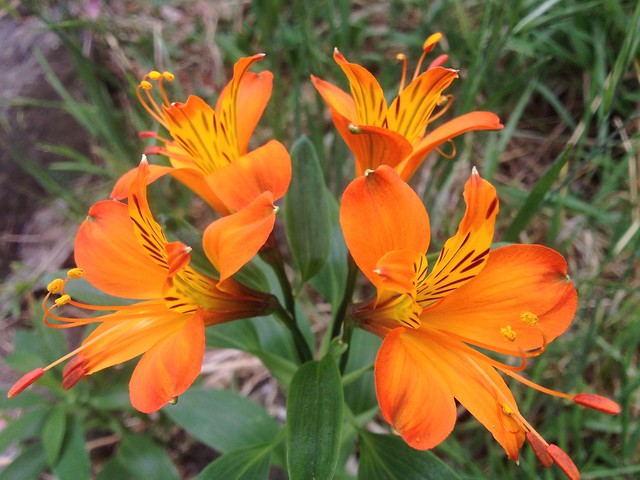RECENT ARTICLES
- CEBRA: An optimised and standardised sampling protocol for BioBlitz
- Stop it people, the plural of anecdote IS data!
- That's no pollinator, that's a flower visitor
- Add a scale to your macro photos
- What to photograph when counting the wild
- Imagine counting the wild on EVERY street in a city!
- My wild counting workflow
- A butterfly flew through
- Why iNaturalist observations without photos can be research grade
- Why you shouldn’t use a spreadsheet for data entry
- All articles ...
Peruvian lily invading Cracroft Reserve
I was introduced to another showy exotic garden plant that’s now wild and spreading in New Zealand. How far and fast will it spread?
written Dec 20, 2014 • by Jon Sullivan • Category: Wild Changes

Here’s a pretty wild flower that popped up in our garden this year, in Cashmere, Christchurch. It’s also spreading through the northeastern corner of Cracroft Reserve, adjacent to our house. I uploaded a photo of it to iNaturalist NZ and learned that it was Peruvian lily, Alstroemeria aurea. It’s a lily with orange striped flowers.

Peruvian lily (Alstroemeria aurea) growing wild in my garden in Cashmere, Christchurch, December 2014 (view observation on iNaturalist NZ).
According to New Zealand’s Flora III, where it’s listed by its old name Alstroemeria aurantiaca, it was first collected wild in NZ back in 1945 when legendary NZ botanist Arthur Healy found it on an Upper Hutt roadside. It has since been recorded wild in almost every region of New Zealand. Flora III, published in 1980, regarded it as “rare on roadsides and waste land.”
I expect that’s still the case as I have not seen it anywhere else in the neighbourhood, and certainly not anywhere visible from the street down Dyers Pass Road, Hackthorne Road, and Macmillan Ave (which I bike and run along frequently). The Australasian Virtual Herbarium lists two collections from Canterbury, both collected by Bill Sykes from Christchurch in February 1990, and another under its synonym, Alstroemeria aurantiaca , by Peter Heenan in December 2006.
That makes it a recent addition to Canterbury’s naturalised flora and puts it early in its invasion. Perhaps it will always remain rare, but we’ve no way of knowing that for sure. It pays to be cautious with new plant naturalisations. I pulled it out from our garden and cut the flowers off the plants in the reserve so they wouldn’t seed.
(The flowers didn’t go to waste though. They looked glorious in a vase in our kitchen. I’m not completely immune to the gaudy charms of colourful exotic plants. Plus one went in my plant press for the herbarium.)